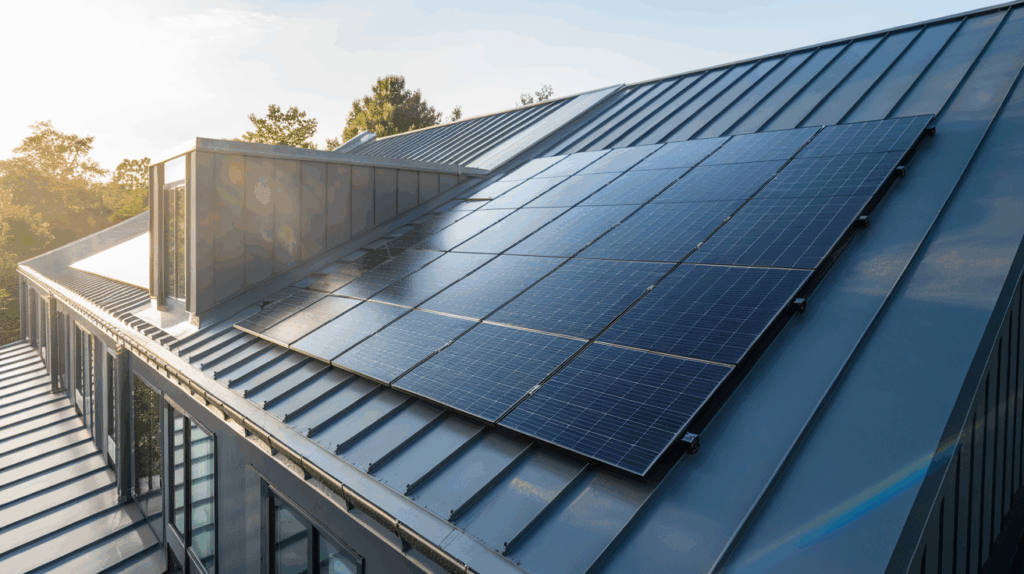When it comes to roofing, metal has long been a material known for its durability and aesthetic appeal.
But in recent years, metal roofing has undergone several innovations, making it more energy-efficient, durable, and sustainable than ever before.
Homeowners looking to replace or install a new roof will have access to groundbreaking technologies that promise better performance, lower energy bills, and longer-lasting roofs.
In this blog, I’ll highlight six key metal roofing innovations that are shaping the future of roofing, making it more accessible and beneficial to homeowners.
How Metal Roofing Can Increase Your Home’s Value
Metal roofing not only offers long-term durability but can also enhance your home’s value.
Homes with metal roofs are often seen as more energy-efficient and durable, which makes them more attractive to potential buyers.
This is particularly true in regions with harsh weather conditions, where metal roofing is considered a premium option due to its resilience.
Additionally, many buyers appreciate the low maintenance requirements of metal roofs, making homes with this feature more desirable on the market.
If you’re considering selling your home in the future, installing a metal roof could provide a solid return on investment.
Top Metal Roofing Innovations
In this, I’ll highlight the top trends and future developments in metal roofing, highlighting how they’ll shape the roofing industry and benefit homeowners.
1. Smart Metal Roofing: Integration with Home Automation Systems
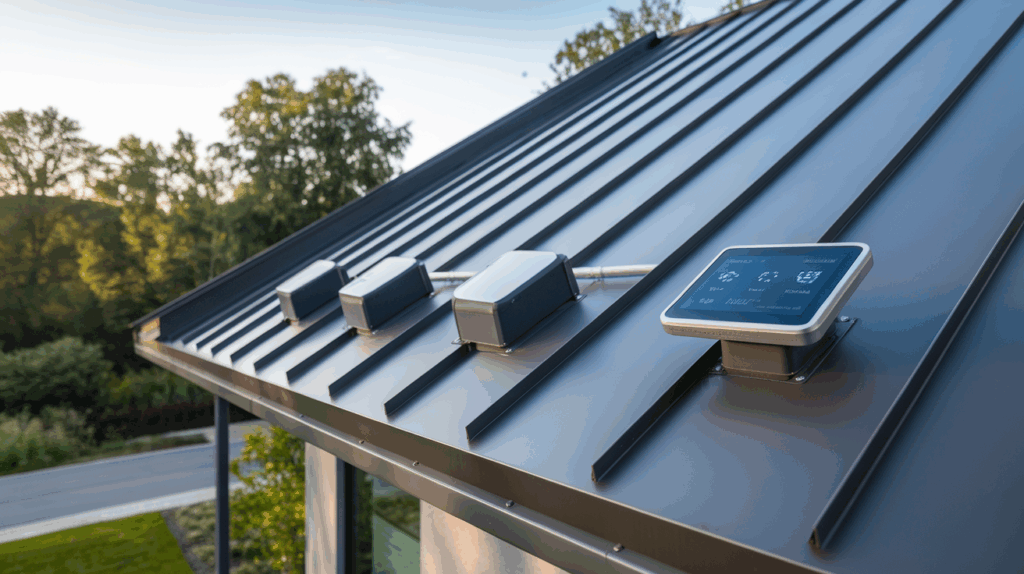
One of the most exciting trends for metal roofing is the rise of smart metal roofs. These roofs are integrated with home automation systems, offering enhanced performance, energy efficiency, and real-time monitoring.
How It Works
- Temperature Sensors: Smart metal roofs can be equipped with sensors that monitor your home’s temperature, adjusting the roof’s properties based on the climate.
- Energy Management: By integrating with home energy management systems, these roofs can help optimize energy use, reducing heating and cooling costs.
As smart homes become more common, integrating roofing systems with home automation is a natural progression.
Homeowners can now have roofs that adapt to environmental changes and help maximize energy savings.
2. Solar Roofs and Solar Panel Integration
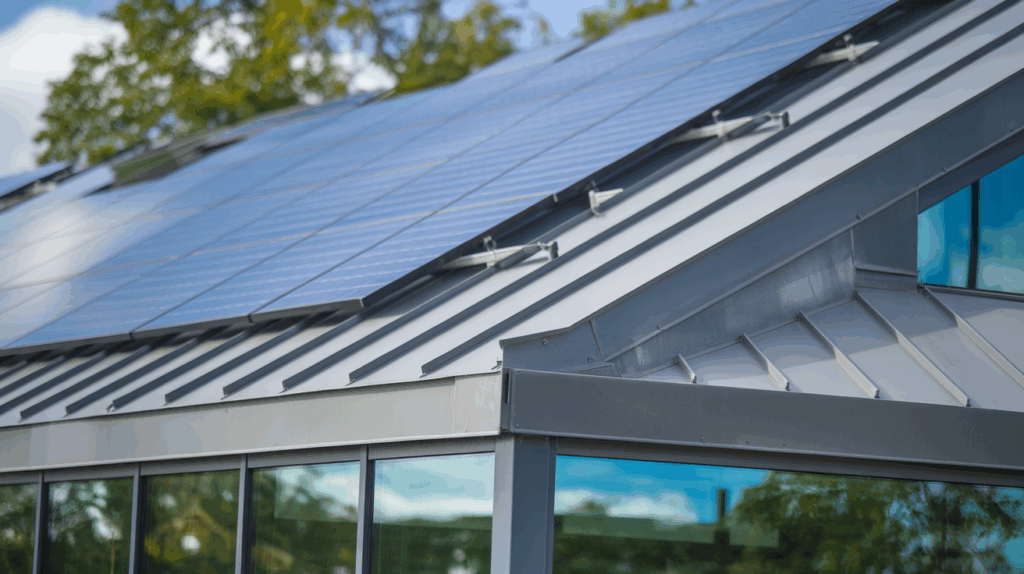
Solar technology continues to evolve, and solar-integrated metal roofs are becoming more popular. These roofs not only serve as a protective covering for your home but also generate clean, renewable energy.
Key Features
- Solar Panels Integrated into Roof Materials: Manufacturers now offer solar tiles and solar-ready metal panels, which allow for the seamless integration of solar panels into the roof structure.
- Aesthetic Appeal: Unlike traditional solar panel installations, integrated solar roofs blend perfectly with the roof material, maintaining the aesthetic appeal of the home.
As energy efficiency becomes a higher priority for homeowners, combining solar energy generation with metal roofing is an excellent way to reduce reliance on non-renewable energy sources, lower electricity bills, and increase the overall value of the home.
3. Cool Roofs with Advanced Coatings
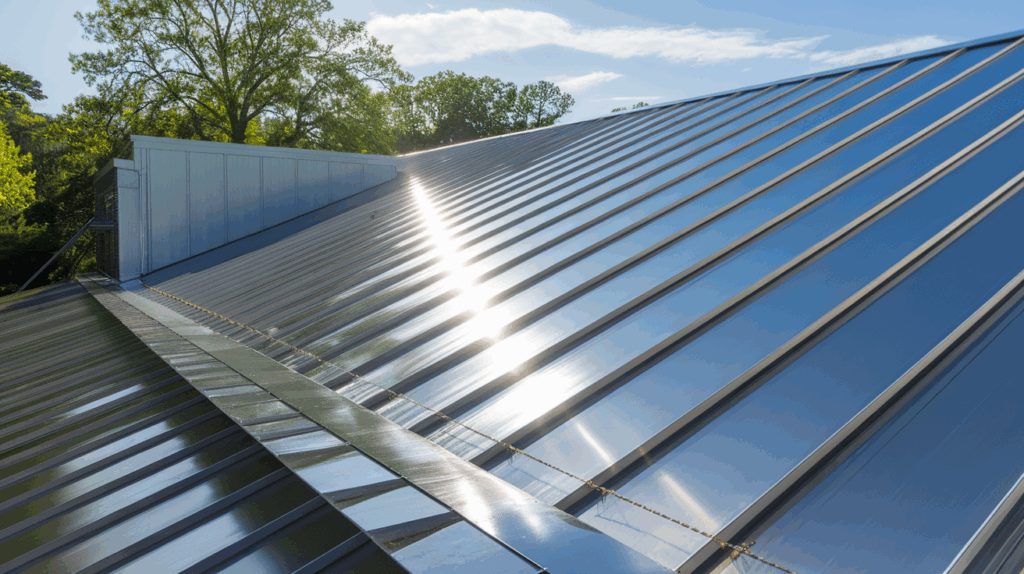
The trend of cool roofs continues to gain traction with even more advanced reflective coatings available for metal roofing.
These coatings are designed to reflect more sunlight and absorb less heat, helping to keep homes cooler in warmer climates.
How It Works
- High-Reflective Coatings: New high-performance coatings increase the roof’s reflective capabilities, significantly reducing heat absorption.
- Energy Efficiency: By reducing the need for air conditioning, cool metal roofs help lower energy costs.
As homeowners increasingly focus on sustainability and reducing energy consumption, cool metal roofs provide an environmentally friendly option that lowers carbon footprints while also providing practical benefits in terms of cooling costs.
4. Sustainable Materials and Recyclability
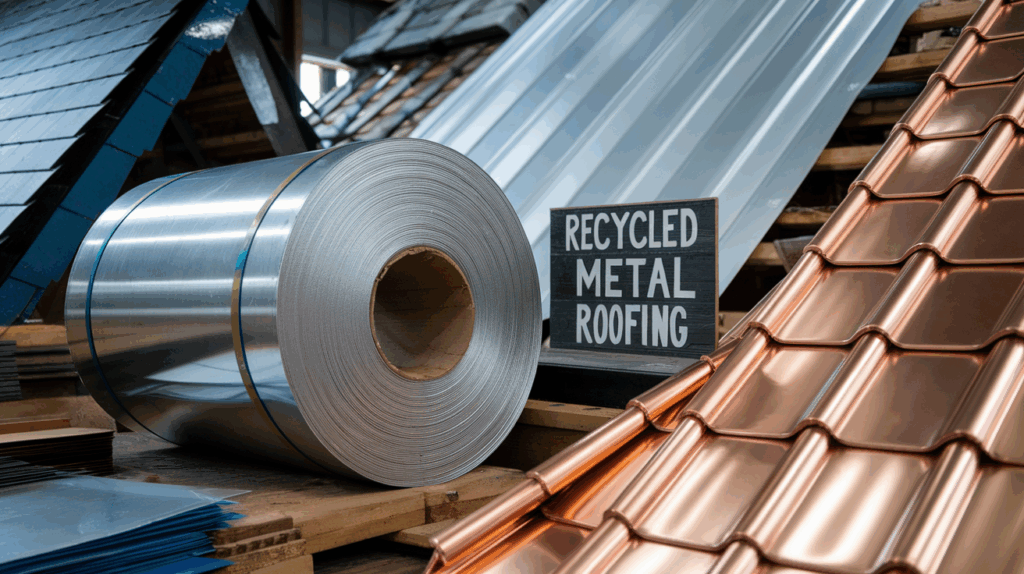
Sustainability is at the forefront of metal roofing innovation, and the industry is making great strides in using more eco-friendly materials.
Recyclable metal roofing materials and sustainable production practices are being widely adopted, with an increasing emphasis on using recycled steel, aluminum, and copper.
Key Trends
- Recycled Content: Many new metal roofing materials contain a higher percentage of recycled content, reducing the environmental impact.
- Circular Economy: Metal roofing is 100% recyclable, and companies are focusing on closed-loop recycling, where materials from old roofs are reused for new ones.
Sustainability in construction is a growing concern, and choosing recyclable and sustainable roofing materials is not only beneficial for the environment but can also contribute to earning LEED (Leadership in Energy and Environmental Design) points for green building certifications.
5. Advanced Durability and Weather Resistance
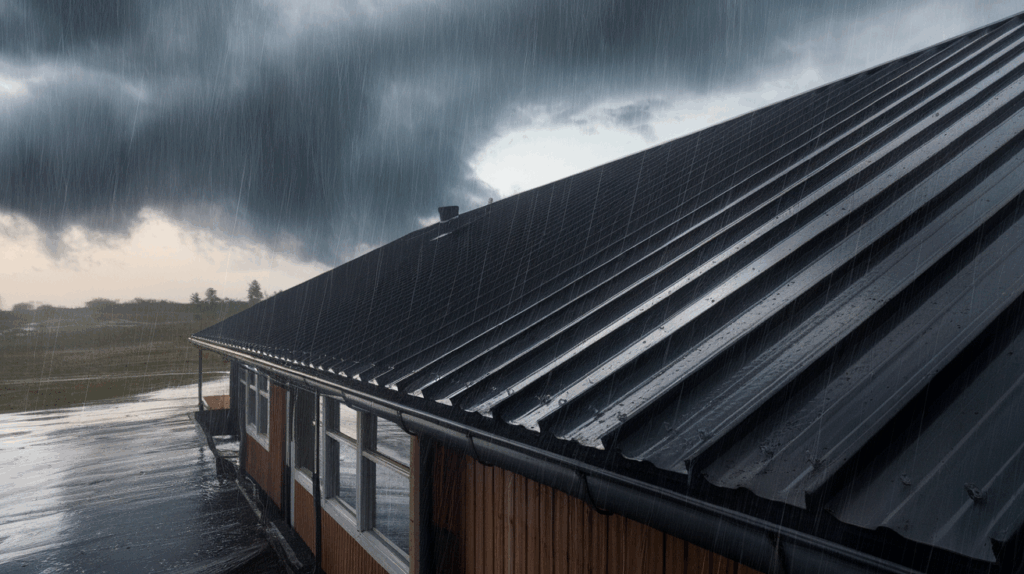
Innovations in coating technologies and alloy compositions have made metal roofing even more durable.
Soon, there will be more roofs that are resistant to extreme weather conditions, including high winds, hail, and extreme temperatures.
New technologies are being used to improve the performance of metal roofs in these demanding environments.
Key Features
- Advanced Coatings: Coatings that resist corrosion, fading, and water damage are now more common. For example, Zinc-Aluminum coatings offer enhanced durability.
- Weather-Resistant Alloys: New alloys that can withstand high winds, intense sunlight, and even salty air have improved the overall resilience of metal roofs.
For homeowners in regions that experience extreme weather conditions, investing in these advanced metal roofing systems will ensure longevity and less frequent maintenance, providing peace of mind through all seasons.
6. Customized Metal Roofing Styles and Textures
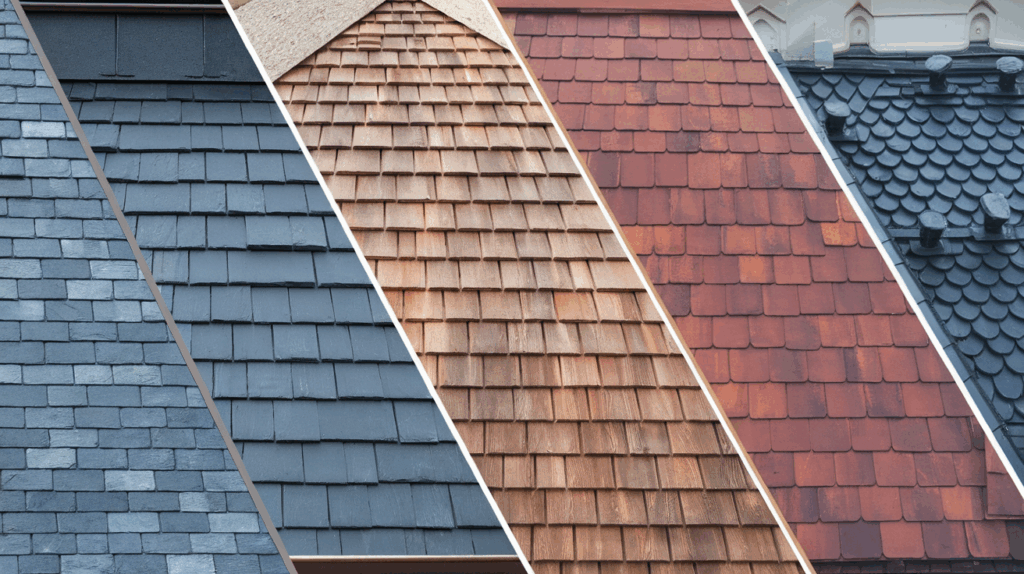
As homeowners demand more aesthetic options for their roofs, customized metal roofing styles are becoming more common.
Manufacturers are offering a wider range of colors, textures, and finishes that allow homeowners to personalize their metal roofs to complement the design of their homes.
Key Innovations
- Textures and Finishes: Metal roofing now comes in various textures that mimic traditional roofing materials like slate, wood shakes, and tile, offering the appearance of high-end materials at a more affordable price.
- Color Options: Advances in paint technology allow for more vibrant, long-lasting color choices, from classic neutrals to modern bold hues.
The trend toward customization allows homeowners to choose roofing that matches their style preferences, making metal roofs more versatile and appealing.
No matter if you prefer a rustic or contemporary design, customized metal roofing offers endless possibilities.
Factors to Consider Before Installing a Metal Roof
While metal roofing offers numerous advantages, it’s essential to ensure that it aligns with your specific needs, budget, and location.
- Climate Considerations: Metal roofs work well in extreme climates, with cool roofs reflecting heat in hot areas and heavier-duty options ideal for snow or rain-prone regions.
- Budget and Initial Cost: Though metal roofing costs more initially, it provides long-term savings due to its energy efficiency, durability, and low maintenance requirements.
- Type of Metal: Choose from materials like steel, aluminum, copper, or zinc based on your budget and specific climate, each offering unique benefits in durability and cost.
- Roof Slope and Design: Consider your roof’s pitch, as standing seam roofs work well on most slopes, while metal shingles or tiles are better for steeper roofs.
- Aesthetic Preferences: Metal roofing comes in various colors, textures, and styles, allowing you to choose an option that complements your home’s architectural design.
- Maintenance and Longevity: Metal roofs require minimal upkeep compared to other materials, offering decades of durability with occasional cleaning and inspections.
Cost of Installing a Metal Roof: What You Should Expect
The price of installing a metal roof depends on several factors, including the material type, roof size, labor costs, and your location.
| Factor | Cost Range |
|---|---|
| Metal Shingles | $7 to $12 per square foot |
| Standing Seam Metal Roof | $9 to $16 per square foot |
| Labor Costs | $3 to $7 per square foot |
| Total Cost (Average) | $10,000 to $30,000 (depending on size, materials, and location) |
It’s always recommended to get multiple quotes from different contractors to ensure the best price for your roofing project.
Maintenance Tips for Metal Roofing
While metal roofs require minimal maintenance, there are still a few tasks you can do to ensure their longevity.
- Inspect Regularly: Periodically check for any debris, rust, or loose panels. Ensure the roofing system is secure and that no parts are missing or damaged to prevent leaks and other issues.
- Clean Gutters: Regularly clean gutters and downspouts to prevent water damage and ensure proper drainage. Clogged gutters can cause water to back up, potentially leading to roof damage.
- Reapply Coatings: If your metal roof has a protective coating, reapply it as needed to maintain its resistance to corrosion, fading, and UV rays. This helps extend the lifespan of the roof.
- Remove Debris: Remove any debris, such as leaves or branches, from the roof surface. This prevents buildup that can trap moisture and lead to corrosion or mold growth over time.
- Check Flashing and Seals: Inspect flashing and seals around vents, chimneys, and skylights. Make sure these areas are properly sealed to prevent water infiltration and damage.
Conclusion
Metal roofing innovations offer a wealth of opportunities for homeowners to enhance the energy efficiency, sustainability, and aesthetic appeal of their homes.
From cool roof technology to solar integration, the advancements in metal roofing are making it a more attractive and practical option than ever.
By choosing the right metal roofing system, you can enjoy a long-lasting, eco-friendly, and low-maintenance roof that enhances your home’s value and performance.
The future of metal roofing is bright, and it is shaping up to be an exciting year for the industry.

